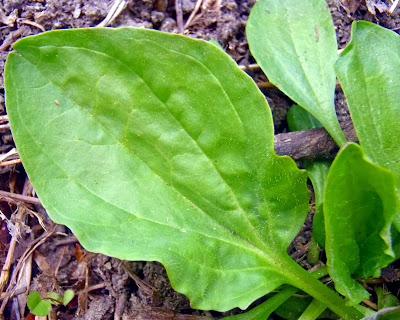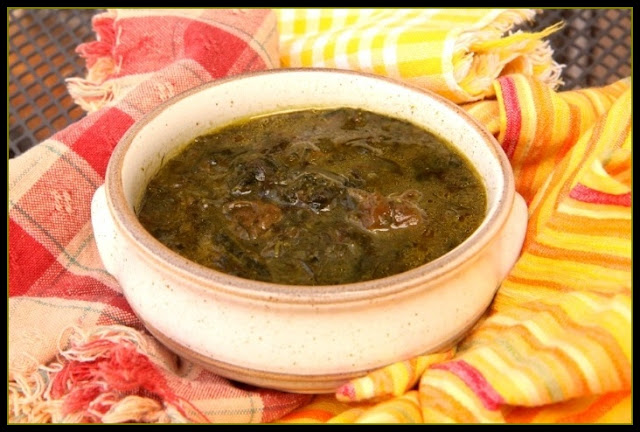Wild About - Plantain
It is my deep suspicion that plants actively and gleefully engage in the game hide and seek. How else could you explain the fact that supposedly obvious plants can so easily evade notice, or that all of the sudden, after months of search, you find a plant right under your nose? Slippery, they are.
Plantain played a good round of hide and seek with me. When I first started learning about plants, it was near the top of my list of desired finds, because of it's reputation for easing the discomfort of bug bites (I'm that person who gets eaten alive all summer long, even when nobody else is getting munched). Plantain is supposed to be a "weed," common to yards and empty plots all over. So much for what's supposed to be. I certainly didn't have any in my yard, and after a summer of riding trails and tromping through fields, I never did find a single plantain plant.
 So early this spring, when the plants were just starting to emerge from the ground, and I was on my hands and knees picking the tiniest little emergent yarrow leaves, I was surprised to catch a glimpse of (could it be?) plantain. There they were, leaves shaped like a tongue with parallel veins that left behind little strings when I picked the leaves. And the old dried seed stalks were there, too, rising out of the basal rosette of leaves. I snapped some pics and excitedly asked Rebecca (poor girl has the misfortune of being my go-to plant guide) if I had plantain on my hands. Roger that, she says, it is your elusive plantain. Woot!
So early this spring, when the plants were just starting to emerge from the ground, and I was on my hands and knees picking the tiniest little emergent yarrow leaves, I was surprised to catch a glimpse of (could it be?) plantain. There they were, leaves shaped like a tongue with parallel veins that left behind little strings when I picked the leaves. And the old dried seed stalks were there, too, rising out of the basal rosette of leaves. I snapped some pics and excitedly asked Rebecca (poor girl has the misfortune of being my go-to plant guide) if I had plantain on my hands. Roger that, she says, it is your elusive plantain. Woot!Not two weeks later, I was screaming down a bike path when a plant jumped out at me. Darn it! There it was again, my plantain.
Mind you, I'm still not see it all over. It's not as ubiquitous here as other places, I suspect. Perhaps it's the altitude? Or maybe it just wants to hide, while I still seek. But I do have two patches that I can access. And this is good news for two reasons. The first reason is that plantain is quickly becoming on of my favorite leafy greens. It has a good flavor, and is nice in all of the usual leafy dishes you might think - salads, quiches, etc. I've heard some describe plantain's leaves as tasting nutty. I've already complained about this being one of my pet peeves - when a foodie doesn't know how to describe the taste of something, they call it nutty. Plantain leaves taste like greens, not nuts. Just be sure to chop it up perpendicular to the veins, to shorten those strings, like you would with celery.
It gets better though. Plantain is also a really effective and soothing medicine. I took a cue from Beks and Kiva Rose, and infused beef tallow with plantain and peach leaves to make a salve good for bites and stings. I put this into old (clean) lip balm tubes, and made sure all of my neighbors got some.
I also stripped the old stalks I found of all their seeds, and intend to plant them in my garden. I'm pretty sure this is a sign that you have officially become a plant nut - when you are purposely trying to cultivate a plant others consider a weed. Once I have them in my garden, I'll be able to use them in spit poultices (good medicine and a fun party trick). How convenient for neighborhood bbq's!
Keep this plant in mind for wilderness first aid. If you get bitten or stung, simply pick a leaf, chew it up, then spit it out as a poultice on your boo-boo. Plantain will help draw out the poison.
I'm sharing this forage with Real Food Wednesday, and Fight Back Friday!



